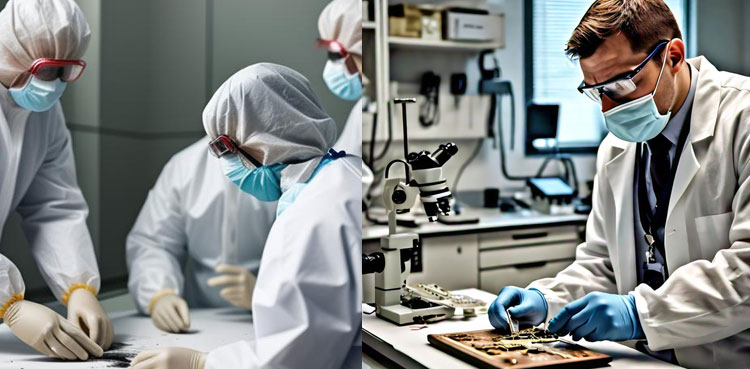
Forensics, the application of science to criminal and civil law, has become an indispensable tool in modern-day investigations. It provides crucial evidence that can link suspects to crimes, exonerate the innocent, and bring justice to victims.
The Role of Forensics in Crime Solving
Identifying Victims: When a body is discovered, forensic experts can use various techniques to identify the victim. This may involve dental records, fingerprints, DNA analysis, or even unique physical characteristics.
Determining Manner of Death: Forensic pathologists examine the body to determine the cause and manner of death. This information is vital in understanding how the crime occurred.
Collecting and Analyzing Evidence: Crime scene investigators meticulously collect evidence from the scene. This can include fingerprints, DNA, fibers, hair, and other trace evidence. Forensic laboratories then analyze this evidence to identify potential suspects or establish a timeline of events.
Providing Expert Testimony: Forensic experts often testify in court to present their findings and explain the scientific methods used. Their testimony can be crucial in convincing a jury of a suspect’s guilt or innocence.
Common Forensic Techniques
Fingerprint Analysis: Comparing fingerprints found at a crime scene to known fingerprints can help identify suspects.
DNA Analysis: DNA profiling is a powerful tool for identifying individuals based on their unique genetic code. It can be used to link suspects to crime scenes, determine familial relationships, and exonerate the innocent.
Ballistics: Examining firearms, ammunition, and bullet wounds can help determine the type of weapon used and the direction of fire.
Toxicology: Analyzing bodily fluids and tissues for the presence of substances such as drugs, poisons, or alcohol can help determine the cause of death or impairment.
Entomology: The study of insects can provide clues about the post-mortem interval, or the time since death.
Document Examination: Forensic document examiners can analyze handwriting, signatures, and documents to determine authenticity or detect alterations.
Advances in Forensic Science
Forensic science is constantly evolving, with new technologies and techniques being developed. Advances in DNA analysis, digital forensics, and other areas have significantly enhanced the ability of investigators to solve crimes.
In conclusion, forensics plays a vital role in modern-day criminal investigations. By providing crucial evidence and expert testimony, forensic experts help to ensure that justice is served, and innocent people are exonerated. As technology continues to advance, forensic science will undoubtedly remain a cornerstone of criminal justice systems around the world.
from Science and Technology News - Latest science and technology news https://ift.tt/QXHbplg


0 Comments